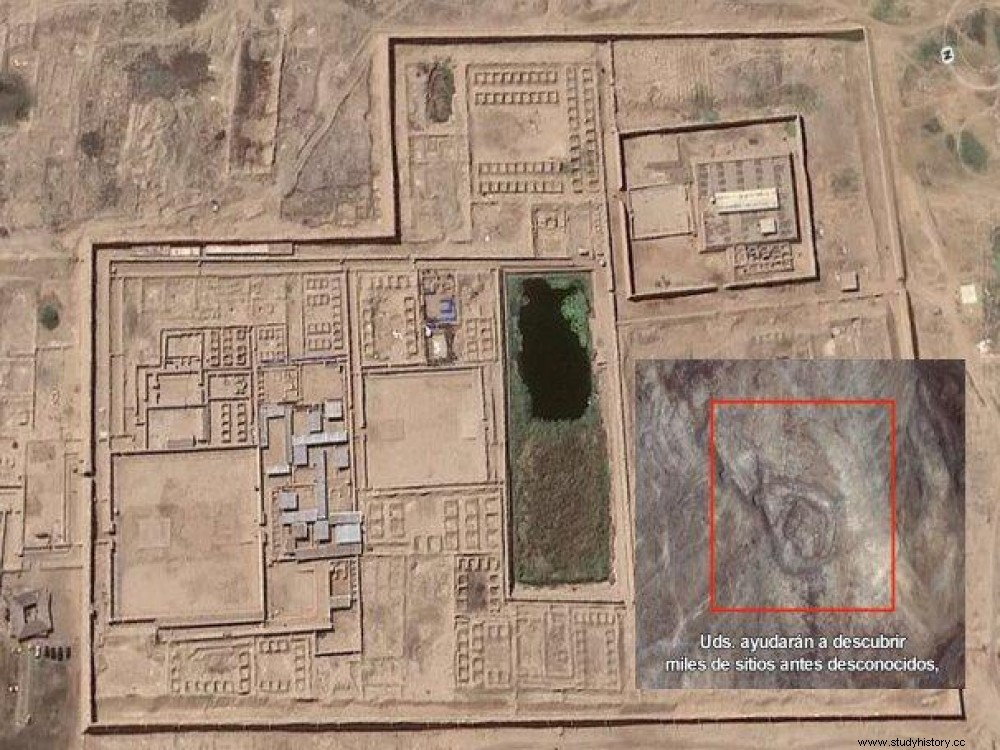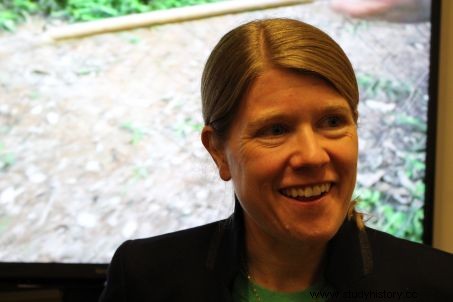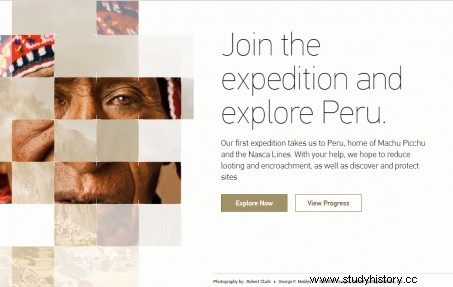The American archaeologist Sarah Parcak offers GlobalXplorer, an online platform allowing Internet users, from satellite images, to participate in the detection of ancient sites.

The Peruvian site of Chan Chan, seen from the sky.
HERITAGE. Playing Indiana Jones from space from your couch? Sarah Parcak in a dream! During a press conference held on January 30, 2017, the American archaeologist unveiled a new online platform encouraging Internet users to participate in the detection of previously unseen ancient sites from satellite images, in order - says -it - to prevent looting. "With GlobalXplorer, we are enabling an army of 21st century global explorers to discover and protect our shared history ", she commented. Currently a professor at the University of Alabama in Birmingham (USA) where she founded the Laboratory for Global Observation, Sarah Parcak, studied Egyptology at Yale where she started to explore the potential of these tools for archaeology. In 2016, she won the TED Prize for her work in detecting ancient sites using special processing of satellite images. This is the million dollar endowment of this prize which allowed him to partially finance this GlobalXplorer.org platform.

American archaeologist Sarah Parcak, at a conference in Vancouver (Canada), in February 2016. © Glenn Chapman / AFP
Objective:to have Internet users' sightings examined by professional archaeologists
Designed like a video game, this platform has the ambition to use satellite photos and submit them to the observation of Internet users called to look for clues indicating a possible new site or traces of looting in progress. The more time the Internet user spends deciphering these images, the more he crosses "levels" of play allowing him to win rewards. Sarah Parcak's objective is then to have the locations thus obtained examined by professional archaeologists according to the principle of "crowdsourcing". "Archaeologists and government agencies will be able to use this data to preserve endangered sites, or initiate new excavations in unexplored areas", she added according to the online journal Live Science.

"As soon as new or destroyed sites are identified, we will be on site to investigate and protect “, assured Larry Coben, founding boss of the Sustainable Preservation Initiative (SPI) which collaborates in this project also supported by the American magazine National Geographic . DigitalGlobe, a partner company specializing in capturing high-resolution photos of the Earth from space, said it has already provided first images covering more than 200,000 square kilometers of Peru, the first country targeted by this program. On site, the project is coordinated by archaeologist Luis Jaime Castillo, from the Catholic University of Lima, and has been approved by the Ministry of Culture.
"Looting is already on such a scale in Peru that any help imaginable is helpful!"
Generous on paper, this project nevertheless raises questions. In the long term, far from protecting the sites, will it not encourage looting? The initiators deny it. They claim that Internet users will only have access to small portions of satellite images, with fairly general location data on the country concerned to prevent the platform from being used by looters who could make their " market ". No location reference or geographical coordinates should thus appear. Joined by Sciences et Avenir , Sonia Guillen, famous Peruvian archaeologist, sees rather a good eye this initiative to which she is not linked:"Looting is already reaching such an extent in Peru that any imaginable help is useful! she says. But the highlighting by Internet users of the destruction of sites implies for me that they can also report the destruction linked to governmental, industrial, or urban development projects! ".
Dominique Garcia, President of the National Institute for Preventive Archaeological Research (INRAP), also joined by Sciences et Avenir, is much more reserved. "It all sounds very nice, but I don't think this virtual appropriation can really help discover truly unique sites or protect them. Rather, it will create new challenges, drawing attention to them !" The specialist is also more measured on the expectations related to the technique used. "Apart from isolated monuments, the great advances in archaeological research in recent times have instead been obtained with Lidar imagery (laser detection, editor's note) than satellite imagery. Not to mention the definition of what can be called an 'archaeological site', nor the commercial dimension that these kinds of operations can have! Archeology is not a game" . At the end of 2017, this project should be extended to another country.
